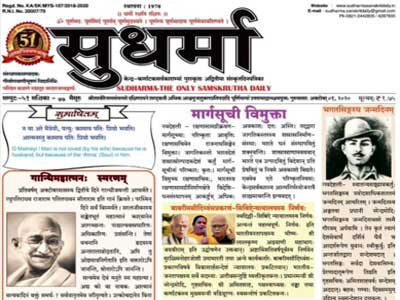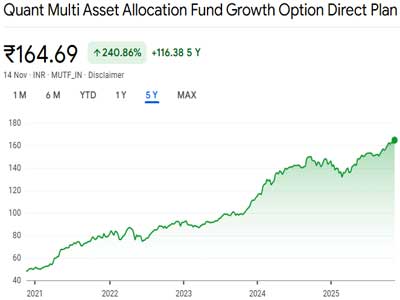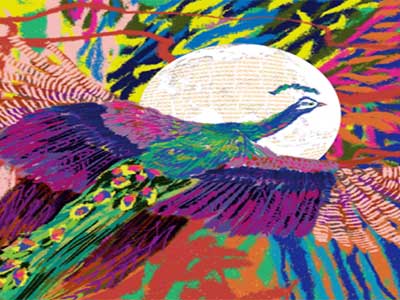In the summer of 2011, a small news item in a Bangalore daily caught my attention. It said the world’s only Sanskrit daily, ‘Sudharma’, published from Mysuru, was on the verge of closure due to financial difficulties. I was intrigued. How could anyone dare to publish a daily newspaper in a language often dismissed as 'dead'?
Curiosity led me to Mysore's Agrahara, where I went looking for Sudharma’s office. A shopkeeper at a street corner couldn’t help, but he directed me toward a printing press. After a few inquiries, I found myself there. A man with a sacred mark on his forehead was dusting a desk. When I asked to see the editor, he motioned me to sit. Moments later, he himself sat in the editor’s chair.
Read in Hindi: संस्कृत की टूटती सांसों को थामे हुए है 'सुधर्मा'
Why publish a daily in Sanskrit, I asked. He smiled and replied with questions of his own: “In what language was your wedding ceremony conducted? Your housewarming rituals? The sacred thread ceremony? Your rites of passage?” To every question, my answer was Sanskrit.
“Then tell me,” he said, “how is Sanskrit not a living, useful language?” His words struck me deeply. I realised my error and apologised. That encounter led me to write several stories, many of which appeared in international newspapers, rallying support for this extraordinary venture.
When editor KV Sampath Kumar passed away in 2021, I feared the paper would die with him. But his wife, Jayalakshmi, stepped forward with remarkable courage. With quiet determination, she resolved, “Sudharma will not stop.”
Founded in 1970 by Sanskrit scholar Pandit Varadaraja Iyengar, Sudharma was born of conviction. At the time, the idea seemed almost absurd: “A newspaper in Sanskrit? Who will read it?” critics scoffed. But Iyengar believed Sanskrit was not confined to scriptures—it was a way of life. He proved that the language could be as relevant today as it was in ancient times.
After his death, stewardship passed to his son Sampath Kumar and daughter-in-law Jayalakshmi. When fate claimed Sampath too, Jayalakshmi, now 59, took the reins single-handedly. From typesetting and proofreading to mailing copies, she does it all herself. No corporate backing, no large team—only her devotion to Sanskrit keeps the paper alive.
Sudharma is not just a chronicle of daily events. Its focus is cultural, educational, and inspirational. Instead of controversies and negativity, it offers constructive stories and positive reflections. Articles are written in simple Sanskrit, making them accessible to students and casual readers alike.
Far from being stuck in the past, Sudharma embraces the present. It coins new Sanskrit words for modern concepts in science, technology, and sports—proving the language is capable of evolving with the times.
In 2008, it became the first Sanskrit e-paper, connecting readers far beyond India. Today, its subscribers include Sanskrit enthusiasts in the US, Germany, Japan, and Australia. Still, survival is an uphill battle. Each month, publishing costs around ₹50,000, covered mainly through subscriptions and donations. Annual subscription: just ₹600.
Since 1995, Sudharma has also published a Panchang, an almanack detailing festivals, seasons, and mythological lore. In India, the Panchang is more than a calendar of dates; it is a rhythm of life, linking people with rituals, seasonal cycles, and cultural traditions.
Sanskrit itself is India’s cultural bedrock. From the hymns of the Vedas and verses of the Gita to Kalidasa’s poetry and Aryabhata’s formulas, its influence spans philosophy, art, mathematics, and science. The Mahabharata and Ramayana are not just epics, but reservoirs of values and wisdom.
It was Sanskrit that once helped India become a Vishwaguru. Even today, yoga, Ayurveda, and spirituality, all global phenomena, draw from its depths. With its perfect harmony of sound and meaning, Sanskrit offers not just knowledge, but an experience of the sacred.
At a time when even large newspapers are struggling in the digital age, Jayalakshmi’s devotion keeps this miracle alive. Her work is a reminder that true commitment can sustain not only a newspaper, but a movement.
Sudharma is more than print on paper; it is the heartbeat of Sanskrit, the living link between India’s past and its future. It shows that tradition and modernity can walk hand in hand.
Sanskrit, through Sudharma, whispers a timeless truth: a language is never just a tool of communication—it is the soul of a civilisation, the essence of identity, and the promise of the future.


















Related Items
How foul language became our national safety valve!
Financial concerns affect electricity usage more than environmental…
When language becomes a weapon of mass distraction